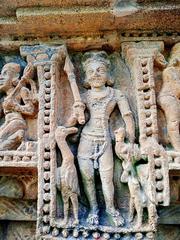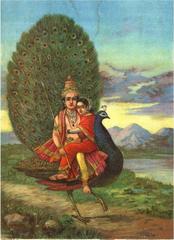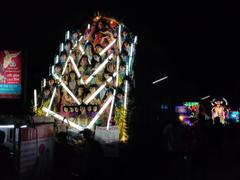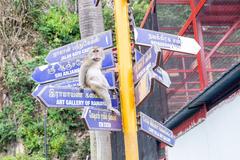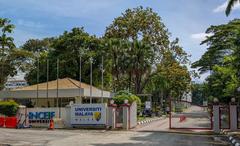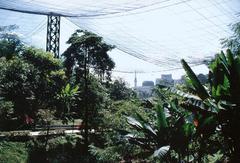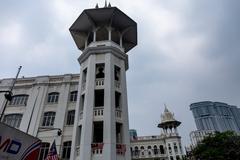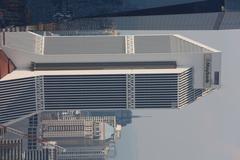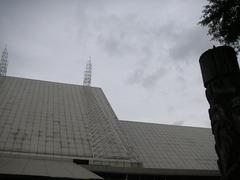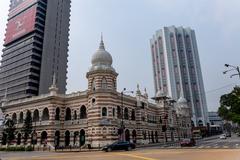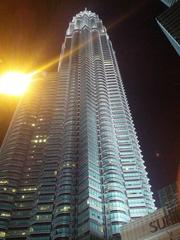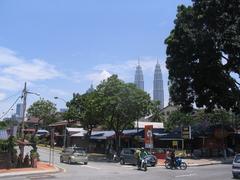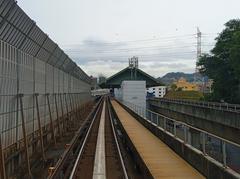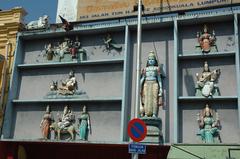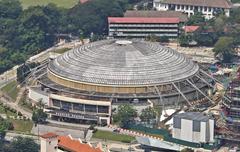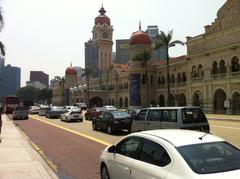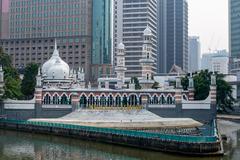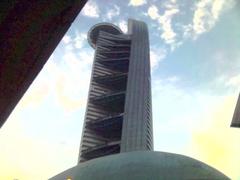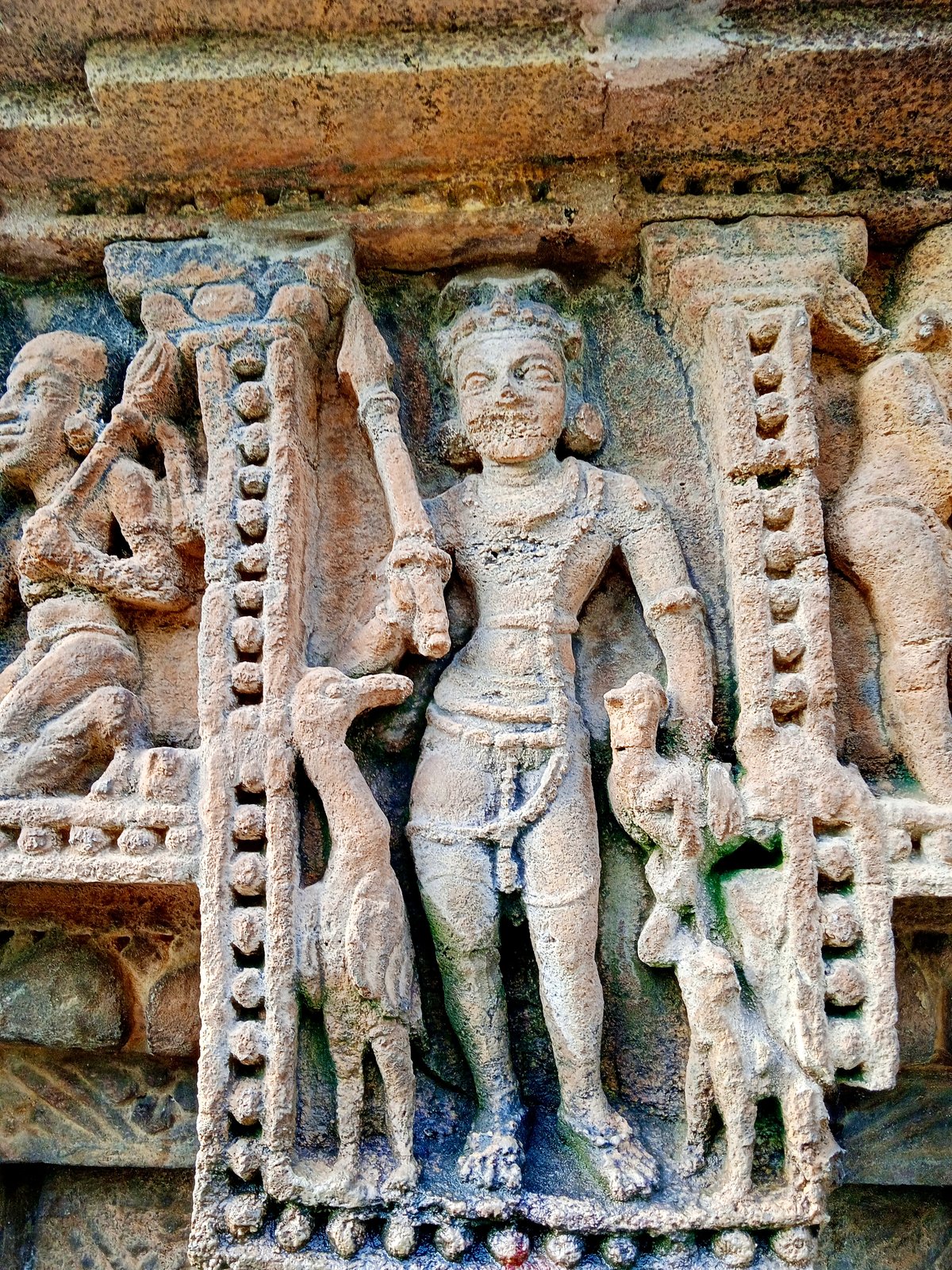
Visiting the Lord Murugan Statue in Kuala Lumpur: Tickets, Hours, and Tips
Publication Date: 24/07/2024
Introduction to the Lord Murugan Statue
The Lord Murugan Statue at Batu Caves in Selangor, Malaysia, is an awe-inspiring monument that stands as a testament to the devotion and craftsmanship of the Tamil Malaysian community. This colossal statue, towering at 42.7 meters (140 feet), is the tallest statue in Malaysia and one of the tallest statues of the Hindu deity Murugan in the world (Wikipedia). Erected at the base of the Batu Caves, a limestone hill that houses a series of caves and cave temples, the statue is not only a significant religious symbol but also a major tourist attraction. This comprehensive guide aims to provide an in-depth look at the history, construction, cultural significance, and practical visitor information for those planning to visit this iconic site.
Table of Contents
- Introduction to the Lord Murugan Statue
- Origins and Construction
- Strategic Location
- Cultural and Religious Significance
- Visitor Information
- Challenges and Controversies
- Future Developments
- FAQ Section
- Conclusion
Origins and Construction
The idea to build this monumental statue was conceived by the Tamil Malaysian community, spearheaded by K. Thamboosamy Pillai, a prominent leader who established Batu Caves as a place of worship in 1890 (Discover Walks). Constructed using 350 tons of steel bars, 1,550 cubic meters of concrete, and 300 liters of gold paint, the project was completed by a team of 15 skilled sculptors from India over three years, costing approximately 2.5 million Malaysian Ringgits (Wikipedia). The statue was unveiled in January 2006 during the Thaipusam festival, a significant Hindu festival celebrated by the Tamil community, marking a momentous occasion in the history of Batu Caves (Discover Walks).
Materials and Construction Process
The construction of the Lord Murugan Statue was a massive engineering feat that required 350 tons of steel bars, 1,550 cubic meters of concrete, and 300 liters of gold paint (Discover Walks). The statue was built by a team of 15 skilled sculptors from India, who worked tirelessly for three years to complete the project. The total cost of construction was approximately 2.5 million Malaysian Ringgits (Wikipedia).
Strategic Location
The Lord Murugan Statue is strategically located at the base of the Batu Caves, a limestone hill that houses a series of caves and cave temples. The Batu Caves are situated approximately 13 kilometers north of Kuala Lumpur and are one of the most famous Hindu shrines outside of India (Discover Walks). The caves are believed to be over 400 million years old and have been a site of religious significance for centuries.
The statue stands at the foot of a 272-step staircase leading to the Temple Cave, the main cave temple dedicated to Lord Murugan. The golden statue, with its imposing height and striking appearance, serves as a beacon for pilgrims and tourists alike, drawing them to the sacred site (Wikipedia).
Cultural and Religious Significance
The Lord Murugan Statue holds immense cultural and religious significance for the Tamil community in Malaysia and beyond. Lord Murugan, also known as Kartikeya, is the Hindu god of war and victory and is revered as the protector of the Tamil people. The statue symbolizes the devotion and reverence of the Tamil community towards their deity and serves as a focal point for religious activities and festivals.
The Batu Caves are the epicenter of the annual Thaipusam festival, which attracts thousands of devotees from around the world. During the festival, devotees undertake a pilgrimage to the Batu Caves, carrying kavadis (ornate structures) as offerings to Lord Murugan. The festival is marked by elaborate rituals, including body piercing and self-mortification, as acts of devotion and penance (Where is Mai).
Visitor Information
Visiting Hours
The Batu Caves are open daily from 6:00 AM to 9:00 PM, but it’s best to visit early in the morning to avoid crowds and heat.
Tickets
Entry to the Batu Caves Temple is free, but some of the attractions within the complex, like the Dark Cave, may have an entry fee.
Travel Tips
Wear comfortable clothing and be prepared for a lot of walking and climbing. Be cautious of the macaques around the temple area as they are known to snatch food and belongings.
Nearby Attractions
Other attractions near Batu Caves include the Ramayana Cave and the Cave Villa, both offering unique experiences and insights into Hindu mythology.
Accessibility
The site is not very wheelchair-friendly due to the numerous steps leading to the Temple Cave.
Challenges and Controversies
The construction and maintenance of the Lord Murugan Statue have not been without challenges and controversies. One notable issue arose in 2018 when the temple committee painted the staircase leading to the Temple Cave in vibrant, Instagrammable colors without approval from the National Heritage Department. This move, while attracting more tourists, risked the shrine being de-listed as a National Heritage Site (Where is Mai).
Additionally, the presence of macaques around the temple area poses a challenge for visitors. These long-tailed monkeys are known to snatch food and belongings from unsuspecting tourists, necessitating caution and vigilance (Syfaganjar Story).
Future Developments
The success of the Lord Murugan Statue at Batu Caves has inspired plans for similar projects in other locations. For instance, there are plans to build another imposing statue of Lord Murugan, standing at 41.1 meters, at the Kathirvel Murugan temple in Sornamalai, Tamil Nadu, India. This new statue will be constructed by the same team of sculptors who built the Batu Caves statue and will primarily use reinforced concrete (Discover Walks).
FAQ Section
Q: What are the visiting hours for the Lord Murugan Statue at Batu Caves?
A: The Batu Caves are open daily from 6:00 AM to 9:00 PM.
Q: Is there an entry fee to visit the Lord Murugan Statue?
A: Entry to the Batu Caves Temple is free, but some attractions within the complex may have an entry fee.
Q: How many steps are there to reach the Temple Cave?
A: There are 272 steps leading to the Temple Cave.
Q: Are there any nearby attractions worth visiting?
A: Yes, nearby attractions include the Ramayana Cave and the Cave Villa.
Conclusion
The Lord Murugan Statue at Batu Caves is not just a remarkable feat of engineering and artistry but also a profound symbol of faith and cultural identity for the Tamil community. Its towering presence continues to inspire awe and reverence among devotees and tourists alike, making it a must-visit landmark in Malaysia. Whether you’re drawn by its historical significance, religious importance, or sheer architectural marvel, the Lord Murugan Statue offers an enriching and unforgettable experience. Don’t forget to download the Audiala mobile app for more travel tips and updates on historical sites around the world!
Sources and References
- Wikipedia. (n.d.). Batu Caves Murugan Statue. Wikipedia
- Discover Walks. (n.d.). Top 5 Remarkable Facts About the Lord Murugan Statue at Batu Caves. Discover Walks
- Where is Mai. (n.d.). Batu Caves Murugan Statue: Interesting Facts, History & How to Get There. Where is Mai
- Syfaganjar Story. (n.d.). Batu Caves. Syfaganjar Story
